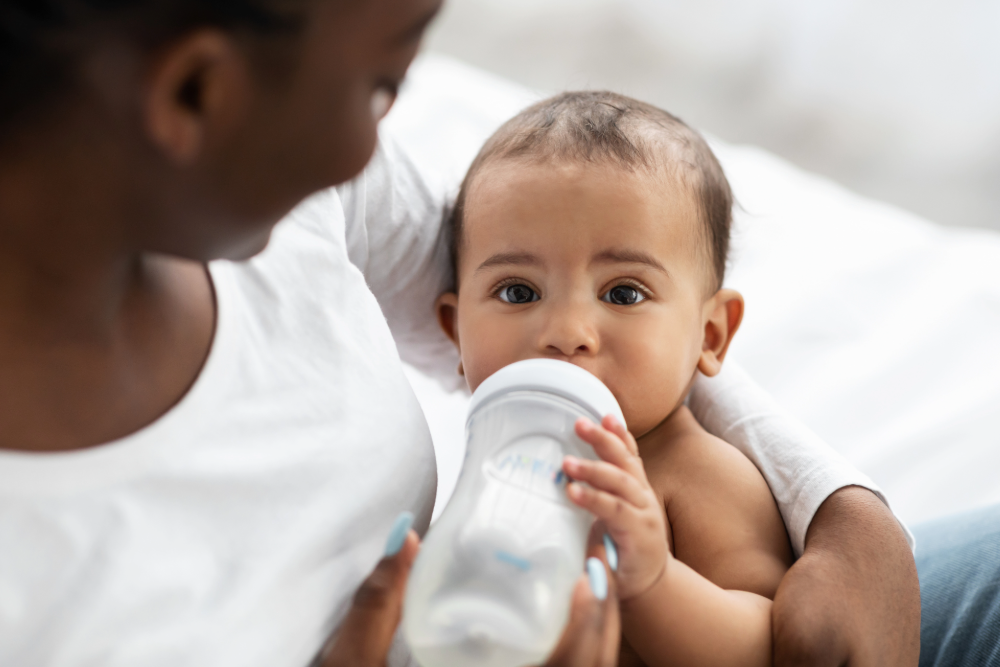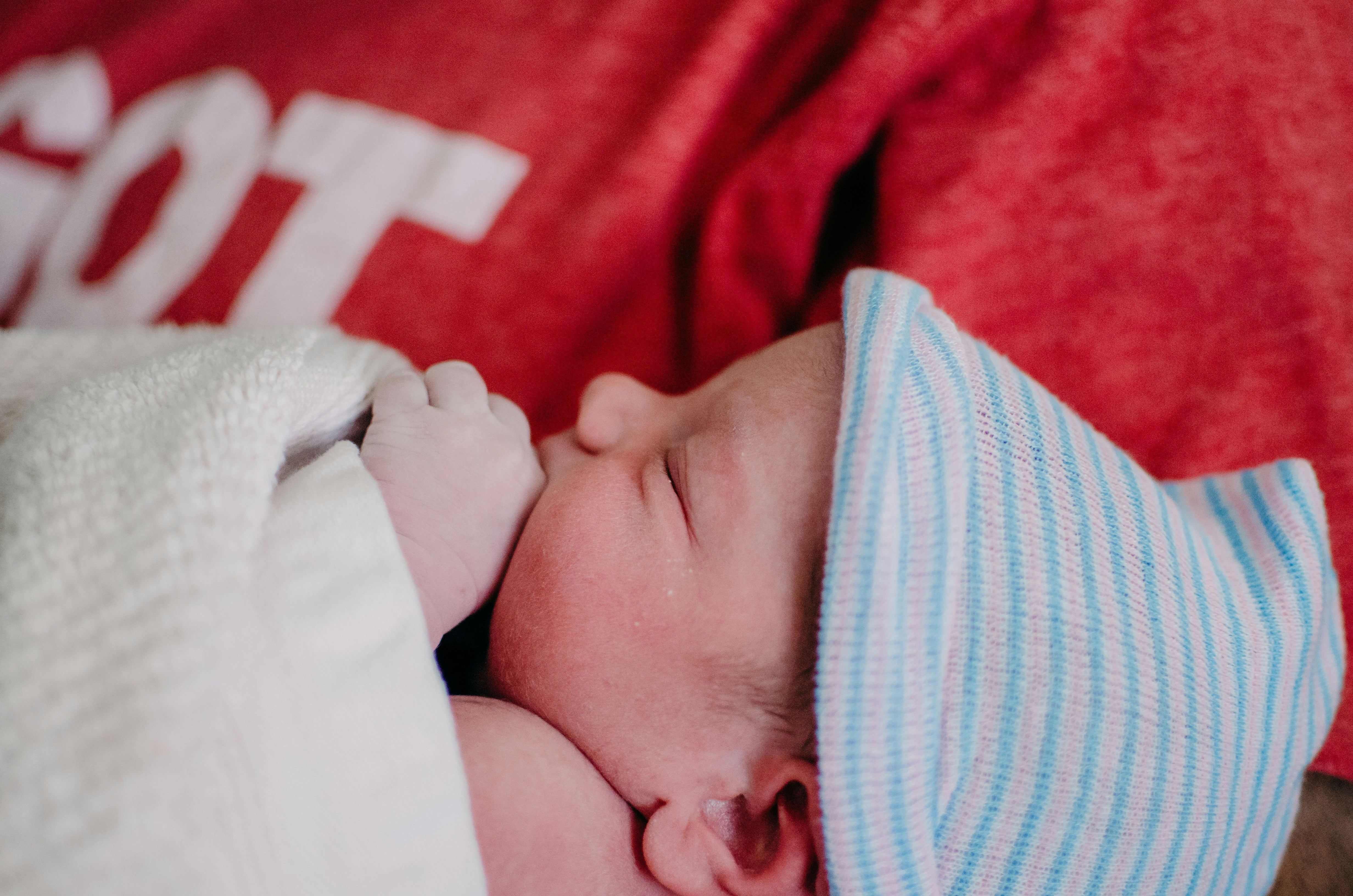
Baby's Drinking Amount: How Much Should My Baby Drink?
The question " How much should my baby drink? " concerns many (new) parents – especially in the first few months of life. Whether you're breastfeeding, pumping, or bottle-feeding – the right amount of milk is crucial for your baby's healthy development. At the same time, the amount of milk needed varies from child to child, depending on age, weight, growth spurt, and individual needs.
In this guide you will learn:
-
how to calculate the recommended amount of fluid,
-
how to tell if your baby is drinking enough,
-
and what you should consider with breastfed babies, bottle-fed babies or during the complementary feeding period.
Why is drinking the right amount so important?
Babies are made up of a large proportion of water—around 75% at birth. Adequate hydration is therefore extremely important for:
-
kidney function,
-
the regulation of body temperature,
-
digestion,
-
and growth.
Both undersupply (dehydration) and oversupply (e.g., too much diluted formula) can be harmful to health.
How much should a baby drink per day? (Rule of thumb)
There are general recommendations for how much breast milk or formula a baby should consume per day—but remember: every baby is different! These values are guidelines:
1st month of life:
-
60–90 ml per meal , every 2–3 hours
-
Total: 400–700 ml per day
2nd–4th month:
-
120–150 ml per meal
-
5–6 meals daily
-
Total: 700–1000 ml per day
From 5 months:
-
150–200 ml per meal
-
With the introduction of complementary foods, the amount of milk may decrease slightly.
👶 Individual calculation :
A frequently used guideline is:
150 ml of milk per kilogram of body weight per day
Example:
A baby weighing 5 kg → 150 ml × 5 = 750 ml per day
Breastfeeding fluid intake: How much does my baby drink?
Breastfeeding works on the principle of supply and demand. It's more difficult to measure the exact amount—but it's not necessary if your baby is healthy and content .
Signs that your baby is getting enough breast milk:
-
5–6 wet diapers per day
-
regular bowel movements (especially in the first few weeks)
-
healthy weight gain
-
satisfied behavior after breastfeeding
Average values:
-
In the first weeks: 30–90 ml per meal
-
From 1 month: 90–150 ml per meal
-
A breastfed baby often drinks small amounts throughout the day – frequent feeding is normal!
🍼 Tip : When breastfeeding, it is important to pay attention to signs of hunger – smacking, searching or restlessness are more reliable than crying.
Drinking amount for bottle feeding (pre-food)
Unlike breastfeeding, bottle-fed babies can measure the amount they drink precisely. The guidelines mentioned above apply here (150 ml/kg body weight). Each package also includes a dosage chart that you can use as a guide.
Tips for the bottle:
-
Prepare the food exactly according to the instructions.
-
Don't give extra teas or water – pre-formula contains everything your baby needs.
-
Don’t overfeed your baby – it’s okay if he or she doesn’t finish a bottle.
🔎 Important : Pre-formula is most similar to breast milk – it is also suitable beyond the first year if you are not breastfeeding.
Drinking amount when introducing complementary foods
As soon as complementary foods are introduced (usually from the 5th to 6th month), the amount of liquid slowly changes.
-
Initially, porridge only replaces one milk meal .
-
With each additional porridge, the amount of milk decreases slightly.
-
Nevertheless, milk (breast milk or pre) remains the main source of nutrition in the first year of life.
From the point at which several porridge meals are given daily , additional drinking should also be offered.
Suitable drinks:
-
Water
-
unsweetened herbal tea (e.g. fennel, caraway, anise)
🥄 Tip : It is best to offer a little bit of water with each meal – just a few sips at first.
How do I know if my baby isn't drinking enough?
Dehydration is dangerous in babies and should be recognized quickly.
Warning signs of dehydration:
-
Dry diapers for several hours
-
Sunken fontanelle (soft spot on the head)
-
Dry lips, dry mouth
-
Pale or gray skin tone
-
Lethargy or excessive tiredness
-
Little appetite
📞 Important : If you suspect that your baby is not drinking enough or is dehydrated, seek medical advice immediately!
What should I do if my baby wants to drink too much?
Some babies have a strong need to suckle – but that doesn’t mean they are constantly hungry.
-
Offer smaller quantities more frequently.
-
Check whether your baby is really hungry or just looking for closeness.
-
When breastfeeding, “drinking too much” is rarely a problem because the amount of milk is regulated.
-
If your baby is bottle-fed, you may want to use a pacifier or cuddle to calm them down.
🧸 Tip : If your baby spits up or overdrinks often, talk to your midwife or pediatrician – a different drinking strategy may be useful.
Special features in case of heat or illness
On hot days:
-
Breastfed babies do not need additional fluids – more frequent feeding is sufficient.
-
Bottle-fed babies may need a little more food – do not add water without medical advice!
-
Babies on solid food may also drink water.
If you have fever, diarrhea or vomiting:
-
The need for fluids increases significantly!
-
Breastfeeding on demand or small, frequent bottles.
-
If you notice signs of dehydration, you should definitely seek medical advice!
Frequently asked questions about baby's drinking amount (FAQ)
❓ Can you overfeed a baby?
Yes, this is possible with bottle-fed babies. A breastfed baby usually regulates itself.
❓ Do I have to measure the amount of milk I drink every time I breastfeed?
No – as long as your baby is gaining weight, has wet diapers often and seems content, everything is fine.
❓ How often should my baby drink?
In the first few months, approximately every 2–4 hours , later depending on hunger. Breastfed babies often feed more often.
❓ How do I recognize hunger signs?
Sucking movements, smacking, bringing hand to mouth, restlessness – crying is a late sign.
Conclusion: How to find the right amount of milk for your baby
The ideal amount of milk depends on your baby's age, weight, development, and feeding style . Trust your instincts, observe your child—and seek guidance from your midwife or pediatrician if you have any concerns.
Breastfeeding on demand or bottle feeding as needed is completely sufficient to provide your baby with optimal nutrition. Pay attention to hunger cues, healthy weight gain, and a content baby—then everything will be fine!


